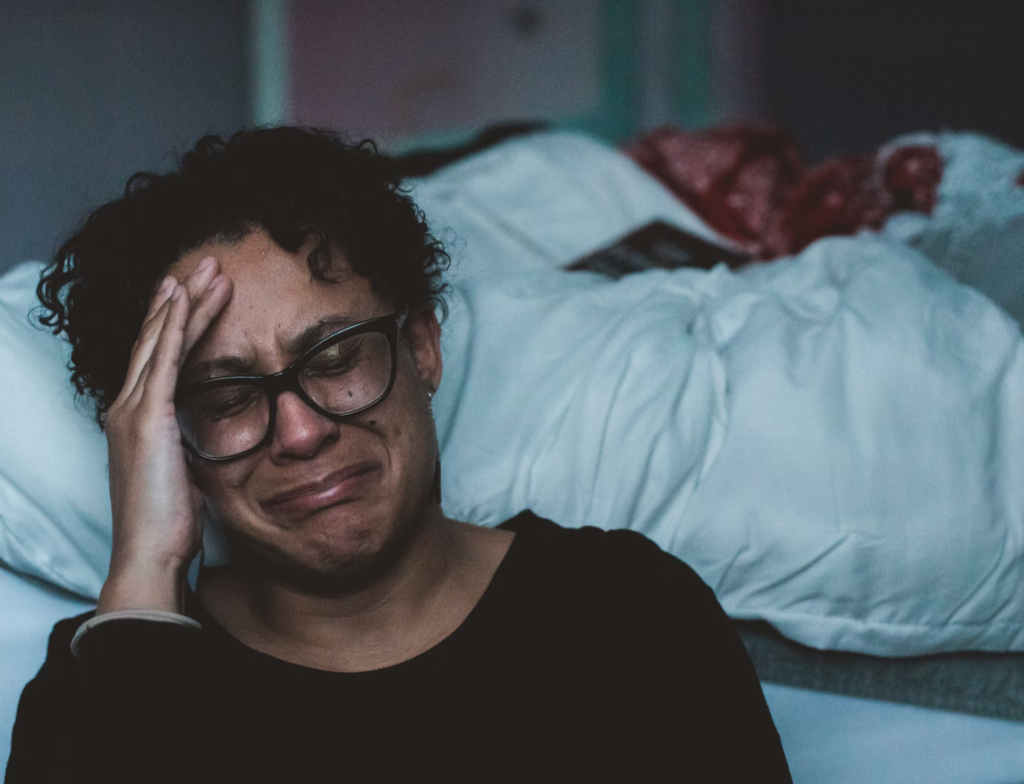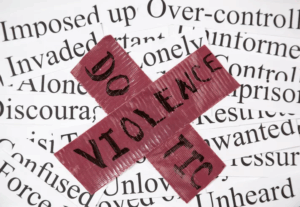Photo Cedit: Claudia Wolff/Unsplash
Black women face high rates of intimate partner violence, but they are often overlooked in national conversations.
By: ReShonda Tate,
For many Black women, domestic violence awareness isn’t a campaign; it’s survival.
According to the Centers for Disease Control (CDC), Black women in the United States face some of the highest rates of intimate partner violence and lethal abuse. Yet, their experiences are often overlooked in policy debates and national conversations.
Studies show that more than four in 10 women experience intimate partner violence in their lifetimes, and Black women are disproportionately affected.
“Centuries of systemic inequities have created conditions where Black women are more likely to be harmed, but less likely to be heard,” said Nat Fields, CEO of the Urban Resource Institute (URI), the nation’s largest provider of domestic violence shelter services. “We cannot separate domestic violence from issues like housing, economic inequality, and racial bias. They all intersect to make safety a privilege instead of a right.”
The Data Gap, and the Deadly Cost
National and local data show the disparity in stark terms. Black women are murdered by men at rates nearly three times those of white women, and most are killed by someone they know—often with a gun.
In Texas, intimate partner and stalking homicides reached one of the highest totals in a decade in 2023 (205 deaths according to the City of Houston), underscoring how lethal these relationships can become. And in Houston, police say domestic incidents now account for roughly a quarter of all homicides, prompting HPD to create a new specialized Family Violence Division this year.
Fields says the pattern is familiar: “When you peel the onion, you see women generally, and Black women even more, disproportionately murdered in intimate partner relationships. Too many survivors can’t access help from systems that have historically pressed people down or left them out.”
Why the System Fails Black Women
Survivors often face a calculus shaped by history, economics, and community realities.
- Mistrust of law enforcement and the courts. “Globally, many individuals seeking help won’t go to the criminal justice system. For Black women, prior marginalization when engaging law enforcement can make them doubt they’ll be protected,” Fields said.
- Research also finds that delayed reporting, often driven by distrust, can increase lethality.
- Economic abuse and instability. Around 95–98% of survivors experience financial abuse, which tanks credit, creates coerced debt, and blocks access to housing and safety. “Leaving isn’t just about courage—it’s about resources,” Fields notes.
- Cultural pressures to keep harm “in the family.” “Historically in this country, domestic violence was treated as a private issue,” Fields said. “Some Black women also choose not to involve police to avoid exposing partners to a system that hasn’t treated our communities fairly.”
Jill, a Houston survivor, described the bind: “My family warned me he was bad news. I stayed because I didn’t want them to be ‘right’ about my marriage, or about him. I protected our image until the day I finally realized protecting him meant I wasn’t protecting myself. That’s when I left.”
Solutions in Action
URI’s model starts with a simple premise: keep the survivor at the center and build the web of support around her.
- Prevention in schools. “We work with tens of thousands of students in junior high and high schools to teach healthy relationships and how to spot abuse,” Fields said. “We learned we had to start younger because many teens were already in abusive dating situations.”
- Pet-inclusive shelters. Because many survivors won’t flee without their animals, URI’s PALS program created co-living spaces for people and pets, helping to spread pet-inclusive sheltering nationally. “People aren’t leaving their pets—and it’s on us to remove that barrier,” Fields said. (URI and The Hotline have documented this intersection extensively.)
- Economic justice and legal help. URI advocates for policies that discharge coerced debt and restore credit, enabling survivors to secure housing and employment. “We map the risk factors, like coerced debt, and then either provide the service or partner to deliver it,” Fields said. (Economic abuse is one of the strongest predictors of entrapment.)
- Mental health care on-site. URI embeds clinical teams in shelters to treat depression, PTSD, and other conditions that can follow IPV, extending care to children, the “invisible faces” of domestic violence, to break intergenerational cycles.
- Working with those who cause harm. URI runs abusive partner intervention, both court-mandated and voluntary—focused on accountability and behavior change. “We won’t end domestic and gender-based violence unless we also work with those committing harm,” Fields said. URI plans to release new evaluation findings on these interventions.
Fields pushes for community-response models: “In places with high rates of DV homicide, engage churches, social services, and—where safe—police. Our colleagues in Maryland observed a decrease in homicides when the entire community took ownership of the problem.
What Houston Needs Now
Local experts say solutions must match the risk:
- Sustain HPD’s new Family Violence Division and expand cross-agency casework with advocates so survivors aren’t left to navigate dangerous systems alone.
- Fund culturally specific services, including those led by Black organizations, and require race-specific data reporting to measure progress. (Without accurate data, Black women get deprioritized in funding.)
- Advance economic protections: coerced-debt relief, job-protected leave, and eviction defenses for survivors. (Economic abuse is pervasive.)
- Invest in prevention in middle and high schools to interrupt the pipeline of abuse before it escalates.
“Prevention, early intervention, emergency shelter, and permanent housing—we need all of it,” Fields said. “And we need it where the risk is greatest.”
The Call to Action
Fields is blunt: “We just can’t do enough about raising awareness across the country. But awareness must translate into resources, policy, and prevention—with Black women at the center.”
Public agencies, philanthropy, and newsrooms can start by counting what has been ignored: race-specific outcomes, community-driven responses, and whether survivors actually become safer. The alternative is more vigils—and more names on annual fatality reports.
Resource Box
- National Domestic Violence Hotline — 1-800-799-SAFE (7233) or thehotline.org. Administration for Children and Families
- Urban Resource Institute (URI) — Pet-inclusive sheltering (PALS), legal and economic-empowerment services: urinyc.org. URINYC
- Houston Area Women’s Center (HAWC) — 713-528-2121; services for survivors across Houston.
- Texas Council on Family Violence (TCFV) — Annual fatality reports and statewide resources. Texas Council on Family Violence




